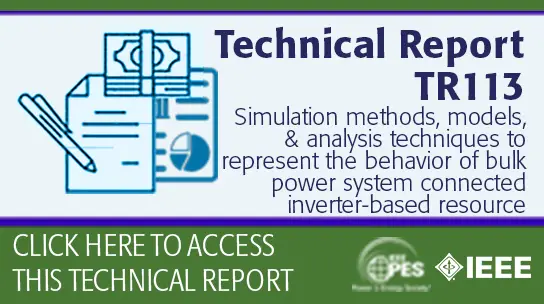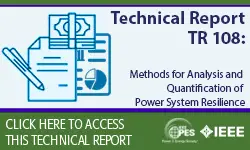Power System Restoration Dynamics (Issues, Techniques, Planning, Training & Special Considerations)
-
-
Members: FreePES
IEEE Members: $45.00
Non-members: $70.00Pages/Slides: 354
INTRODUCTION By: M. M. Adibi, Life Fellow IEEE and Nelson Martins, Fellow IEEE Recognizing that power system blackouts are likely to occur, it is prudent to consider the necessary measures that reduce their extent, intensity and duration. Immediately after a major disturbance, the power system's frequency rise and decay are arrested automatically by various control and protection schemes. The success rate of these automatic mechanisms has been about 50%! The challenge is to coordinate the control and protective mechanisms with the operation of the generating plants and the electrical system. During the subsequent restoration phases, plant operators in coordination with system operators attempt to manually maintain a real and reactive balance. The duration of these manual procedures has invariably been much longer than equipment limitations can accommodate. In this compendium restoration dynamic phenomena are presented and the research and development identified. The US-Canada Report on the August 14, 2003 Blackout cites seven major power disturbances in the order of their greatest impact. Apparently, in classifying the impact, product of intensity, extent and duration of the seven blackouts are used as shown in the following Figure. This is not dissimilar to defining the Richter magnitude Scale! In fact in both definitions a single number has been sought to express the severity of impact. Similarly, Richter magnitude Scale of 3 as shown in the Figure, R = Log (P x C x T) = 3, Appears to be the dividing line between moderate and sever earthquakes as well as in blackouts!


